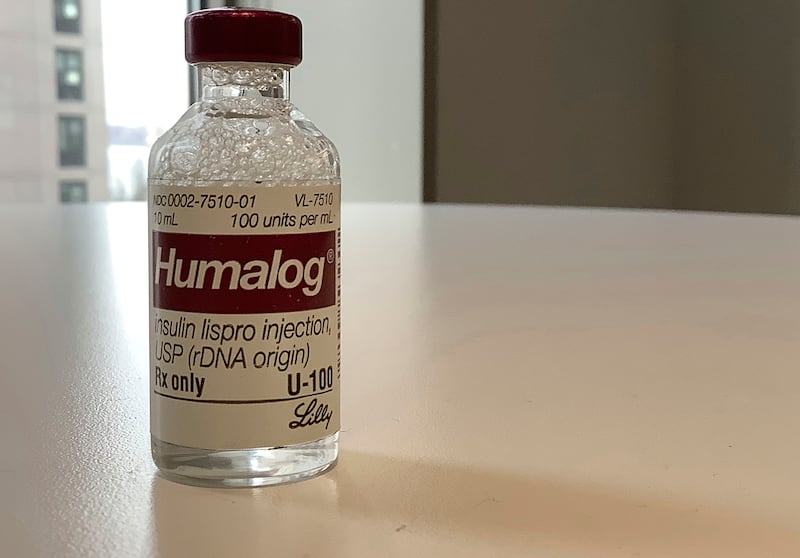Pharmaceutical giant Eli Lilly said Wednesday it will reduce the price of its most often-prescribed insulins by 70% and will expand the program that caps out-of-pocket costs for patients at $35 a month.
The American Diabetes Association says 37 million Americans have diabetes and 8.4 million rely on insulin to manage the disease.
The company announcement said that most patients don’t use Lilly insulin, so it’s asking other companies to match the changes it’s making.
The timing follows on the heels of action by Congress last month capping insulin at $35 a month out-of-pocket for those who are enrolled in Medicare Part D, which is the medication portion of the program that primarily serves older Americans. The cap was a provision in the Inflation Reduction Act.
“We are calling on policymakers, employers and others to join us in making insulin more affordable,” said David A. Ricks, Eli Lilly’s chairman and CEO, in the written statement. “For the past century, Lilly has focused on inventing new and improved insulins and other medicines that address the impact of diabetes and improve patient outcomes. Our work to discover new and better treatments is far from over. We won’t stop until all people with diabetes are in control of their disease and can get the insulin they need.”
Dates for the implementation of various price drops for insulin vary, depending on the product, but all are within the next few months. But out-of-pocket caps will take place immediately. People with insurance will have no more than a $35 co-pay at the retail pharmacy where they buy insulin starting immediately. And those without insurance will be able to go to InsulinAffordability.com and download the Lilly savings card to receive Lilly insulins with out-of-pocket costs capped.
Why now?
As NBC News reported, “Insulin makers continue to face pressure from members of Congress and advocacy groups to lower the cost of the lifesaving medication. Insulin costs in the U.S. are notoriously high compared to the costs in other countries; the Rand Corporation, a public policy think tank, estimated that in 2018, the average list price for one vial of insulin in the U.S. was $98.70.”
NBC noted, too, that “In November, Eli Lilly’s stock price dropped sharply after a fake tweet from an imposter account falsely claimed that the company was making insulin free, renewing focus on its cost.”
And as the Deseret News has reported, outside pressure has been building to reduce costs of insulin, as well. Three states — California, Washington and Maine — have been pushing for public pharma and the ability to produce their own insulin if drug makers don’t rein in costs.
Civica RX, a consortium of health care providers. insurers and philanthropists that was started by Intermountain Health had announced plans to manufacture and distribute insulin at no profit to tackle insulin affordability.
Additionally, according to Deseret News, “In mid-May, the Democracy Policy Network held a web conference on what it called publicly owned pharmaceutical enterprises that aim to develop, manufacture and distribute medicines in the public interest, bypassing big drug companies to reduce prices and solve supply chain issues. Insulin is getting the most attention — and action — which isn’t surprising, since 30 million Americans live with diabetes, including 1.6 million adults over age 20 with Type 1 diabetes who rely on insulin. A lot of them cannot afford a treatment that was first developed more than 100 years ago.”
Insulin manufacturers have been accused of deliberately keeping the price high, and the article noted that 90% of the global insulin market is controlled by three companies. The article said they “change the molecules in their insulin product ‘just ever so slightly and repatent them to extend patent protection,’ a practice called ‘evergreening.’”
Madison Johnson, chapter leader of Washington state’s Insulin4All, said that one brand kept a patent alive for 37 years that way.
Cutting prices
According to the Eli Lilly announcement:
- The price of its nonbranded insulin, Insulin Lispro Injection, will be reduced to $25 a 100 units/mL vial. As of Mary 1, that will be the “lowest-list-priced mealtime insulin available as less than the price of a Humalog vial in 1999.”
- The cost of Humalog, Lilly’s most prescribed insulin, and Humulin will be cut by 70% in Q4 of 2023.
- Eli Lilly will launch Rezvoglar, a basal insulin bio similar to and interchangeable with Lantus, for $92 for a five-pack of KwikPens, which is a 78% discount to Lantus, effective April 1.
The company noted that the change “builds on years of efforts by Lilly to close the gaps in the U.S. health care system that keep some people with diabetes from accessing affordable insulin.” It said it has introduced a number of “insulin affordability solutions” including launching inexpensive nonbranded insulins in 2019 and creation of its Value Program in 2020, as well as making all of its insulins available to the Medicare Part D Senior Savings Model in 2021. “Because of these efforts, the average out-of-pocket cost for Lilly insulins has dropped to $21.80 over the last five years,” it said.
NBC News said Eli Lilly’s value program “began providing insulin to patients — regardless of their insurance statuses — for no more than $35 a month in 2020 because of the pandemic.”


